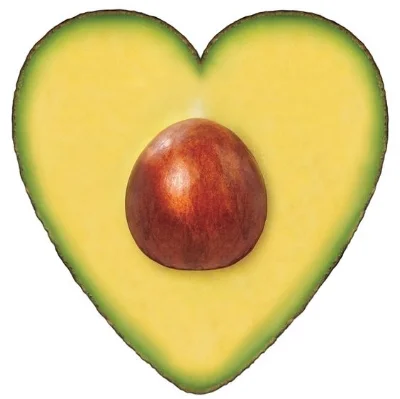Learn To Love Your Cholesterol
/Cholesterol has been given a bad rap. This essential substance is vital for:
*healthy cells
*reducing inflammation and repairing tissue damage
*hormone production
*stress adaptation
*proper digestion
*vitamin D synthesis
*memory and brain health
Every cell in our body maintains its integrity due to the cholesterol that makes up its cell wall. The cholesterol component helps keep the cell wall fluid and permeable for the effective exchange of nutrients and wastes. Without cholesterol our cells would not function properly. This could result in poor cellular energy production and greater systemic fatigue.
Because cells make up tissues which make up organs which make up us, unhealthy cells will lead to unhealthy us.
Cholesterol also acts as the body’s bandaid to minimize tissue damage caused by inflammation, high blood glucose and trans fats from vegetable oils and damaged fats.
The damage to arteries from these oxidative insults results in the body producing more cholesterol to act as an antioxidant, lining the arteries in an attempt to quell the inflammation and protect the arteries from further damage.
The problem arises from continued high blood sugar and damaged fats that then cause the protective cholesterol to oxidize and become sticky, leading to clogged arteries.
Hence, the rescue team becomes the bad guy.
The precursor to hormones is cholesterol, and we certainly all need and want adequate hormone production to keep us young, vital and sexy.
Not only is cholesterol needed for the production of our precious estrogen, progesterone and testosterone, but also for cortisol which allows us to deal with everyday stressors.
Bile is needed for the digestion of fats. The liver synthesizes bile from cholesterol. Inadequate cholesterol will lead to low bile production, sluggish bile, poor fat digestion, and typically gallbladder problems.
We need the healthy fat digestion that bile provides for absorption and utilization of the fat soluble vitamins D, K, A, and E.
Speaking of vitamin D, our bodies have the ability to produce this vitamin when the sun hits our bare skin (without sunscreen). As the sun meets the cholesterol, present in our every cell, the two perform a biochemical dance to produce vitamin D.
Our brains contain the highest concentration of the cholesterol in our bodies. It is vital
for a healthy brain and nervous system. Cholesterol is a vital part of the wiring that allows for learning and memory.
Studies show that older adults with higher cholesterol, better maintain their cognitive function.
Lack of sleep has been correlated with poor memory. One reason may be because sleep allows the brain to replenish its level of cholesterol.
Low levels of cholesterol have also been associated with mood disorders such as depression and mood swings.
Now that you know how important cholesterol is in maintaining good health, how do you insure that your liver is functioning optimally to produce the cholesterol you need?
Keep your diet low in sugar, and add fiber like flaxseeds, chia seeds, nuts and seeds.
include lots of fibrous vegetables like dark leafy greens. The more bitter the better for your liver, like arugula, brussels sprouts, swiss chard and dandelion greens.
Add local raw honey to lower inflammation and nourish your liver and gut.
Try a shot of apple cider vinegar in the morning to help alkalize the body’s PH and nourish the digestive tract.
Warm water with lemon will thin the bile and aid in liver function.
Milk thistle is a powerful herb that gives the liver a boost.
Go easy on alcohol and reduce toxins to unburden the livers job of detoxifying.
Practice de-stressing techniques so your liver does not need to be constantly pumping out cholesterol to provide you with the stress hormone cortisol.
Move your body everyday.
Let go of anger which we hold in the liver. Practice forgiveness of self and others.
I for one embrace organic free range eggs, and avocados are my favorite food. A ketogenic diet may not be for everyone, but many people have improved their health by eating higher amounts of healthy fats and cutting way back on carbohydrates.
As usual, a personalized diet and lifestyle plan is best…but don’t be afraid to eat an avocado.
Unfortunately, pharmaceutical companies are cashing in on statin drug sales, and many conventional doctors are right there with them advocating for lowering cholesterol levels in their patients by using these highly damaging drugs. Studies show statin side effects include muscle damage, (including the heart muscle), increased risk of diabetes, liver damage and memory loss.
Not to mention lower hormone production, thereby reducing your ability to handle stress, adding insult to injury for those managing menopause.
For guidance and support on your journey to better health and vitality, contact me for a free 15 minute consultation at nina.lynn@me.com.

